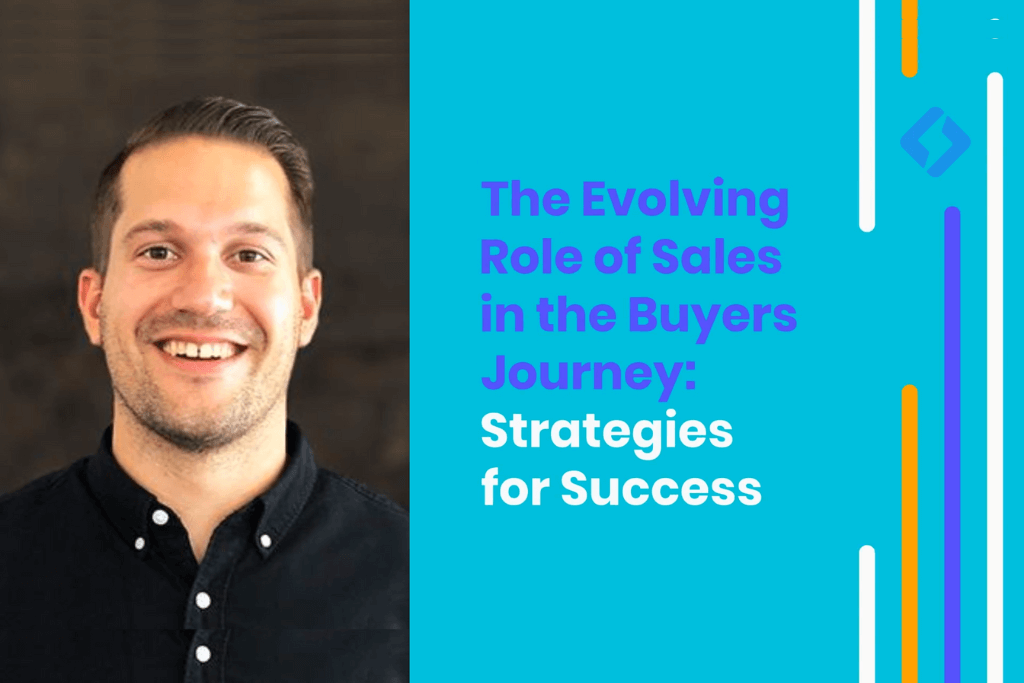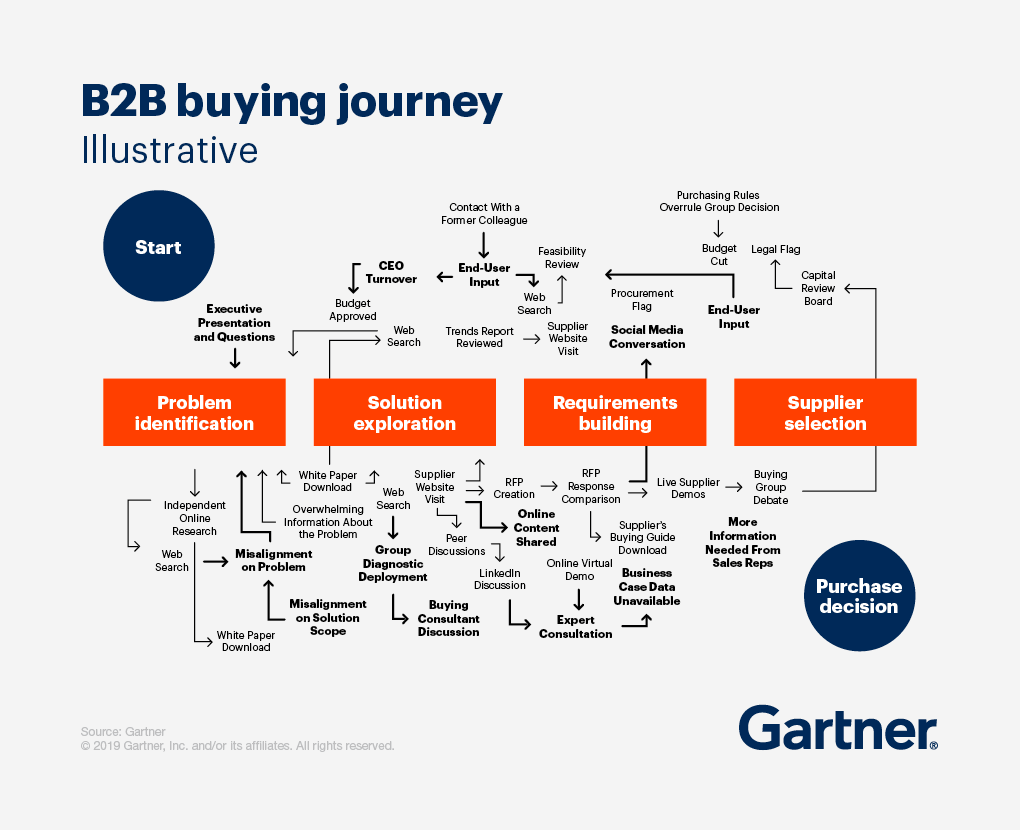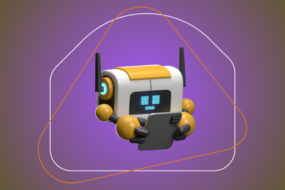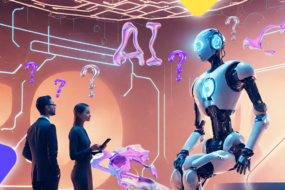
A Personalized Buyer’s Journey
When looking to purchase, buyers only spend 17% of their time speaking with potential brands. When does this occur? Why does this happen? Over time, Marketing has taken the lead on the buyer’s journey – somewhere Sales once dominated. Instead of waiting for Sales reps to share relevant information on a product, buyers are largely taking on research into their own hands. Because of this change, Sales has had to navigate through this new buyer’s journey and adapt to its new role.
Thomas, our Sales Manager, noticed this shift in buying behaviour start to occur as buyers have taken it upon themselves to be more self-sufficient during the awareness and consideration stages. Instead of Sales meeting buyers earlier in the journey, Thomas and his team are meeting them further down the line. He sums this up best:
We had the opportunity to sit down with Thomas and chat about the impact Sales teams have face, along with how has team continually navigates through this change while still achieving success and their goals.
Understanding the Buyer: Behaviours, Changes, and Stage
Now we know that how buyers’ buy has changed, and sales is getting access to prospects a lot later. Where do they still fit in? Where can they make their impact? We can view the purchasing process through an analogy of planning a trip.
Where Sales fits in the buyer’s journey can easily be viewed through an analogy of planning a trip.
When booking a trip, these are the general steps:
- People search for somewhere to travel (Awareness)
- People accumulate a list of choices of where to travel (Awareness)
- People narrow down their choices through research (Awareness/Consideration)
- People finally pick their location and book time off due to FOMO, urgency, etc.
- People finally book and decide on trip activities (Conversion)
The first 3 steps are very self-serve and marketing-led AKA the awareness and consideration stages. Chances are the search or desire to travel is triggered by a video posted on social media, a recommendation, or a Netflix documentary.
Well, for me (Maddie speaking, not Thomas), watching the Kardashians go to Bora Bora and have a great time. (Except for Kim – RIP her diamond earring) cue Kim Kardashian crying face Regardless, their televised trip to the turquoise clear waters and huts on the water got me feeling FOMO.
For this travel example, the catalyst is the catching FOMO from watching travel vlogs. FOMO can drive consumers to make purchases AKA FOMO-based purchases.
But in between Step 4 and Step 5, there is a decision that needs to be made. Do I continue with conducting our own research or do I find a travel agency or local guide for other recommendations? 🤔
To some – to continue conducting research on their own is perfectly fine. But there are so many benefits and valuable insights to uncover when talking to a local guide or agency.
A tour guide can elevate your entire travelling experience. They can provide insight on hidden secrets, suggest alternatives to your itinerary, or help create a new customized itinerary by learning more about you. And after learning more about your interests, needs, or travel style, guides can offer helpful suggestions. This knowledge goes beyond the blogs. Their expertise can provide a more in-depth dive into the specifics, helping with any decision making and/or further planning, such as travel time between locations or deciding which things to skip out or spend more time on.
Now back to reality. Cue Sales in Step 5.
Sales teams need to become the “private customized trip tour guide” of the brand.
And this can apply in B2B as well. Buyers have done their own research and may have a few vendors selected, but need customized information from the Sales teams to validate and assure them that this is the right choice.
Because the buyer’s journey is now focused on the buyer’s research, suiting the buyer’s personalized needs, Sales’ approach similarly needs to be personalized to the buyer.

It’s not about selling the product anymore, but how can Sales provide a personalized and valuable experience while streamlining the buying process?
By understanding a buyer’s existing behaviours and knowledge level, Sales can best provide extra information that is tailored and personalized to suit the buyer’s needs. Thomas speaks further on this:
Focusing on the travel analogy, Thomas explains how Sales teams can become the brand’s tour guide.
B2B sales teams can emulate the same trip planning experience by diving deeper to fully understand the buyer with questions like:
- What are you trying to accomplish?
- What do you do during your day-to-day?
- What are the challenges you’re currently facing?
- What are your attitudes and thoughts on X?
And following up with personalized recommendations and solutions, therefore positioning the B2B brand as the top choice.
Shifting the Sales Mindset: from Selling to Helping
One thing Thomas has learned: meet the buyer where the buyer is. What does this mean? Sales needs to adapt their approach from the get-go. How? Shifting from a selling to helping mindset and going beyond the call.
By shifting the mindset to WIIFMFACPOV? (What’s in it for me from a customer POV?) Sales can dive deeper and find out, “Where along the buying journey are they?” Therefore, Sales can better align themselves with the buyer and meet them at their stage and expectations. Not vice versa.
Thomas provides more insight:
Instead of focusing on “the buyers should meet us at the call”, be more proactive by taking a step back to align the conversation to their needs, wants, and desires. Particularly in B2B, relationship- and purpose-selling requires Sales to put themselves in the buyers’ shoes to help them in their journey. Thomas ends off with this:
And by shifting the focus from a selling-only mindset, “I have to get them on a call” to a more helpful and exploratory mindset, there are a lot more opportunities for future leads and potential nurturing to follow. But the first step is to understand the buyer’s intent and pains to determine what information NEEDS to be readily available so Marketing can produce content to support and drive leads.
Curious and looking for more content?
We’ve got you covered.
Join 500+ other marketers and sign up for emails to learn more about trends, trips and tricks, and what’s going on in the B2B world.






